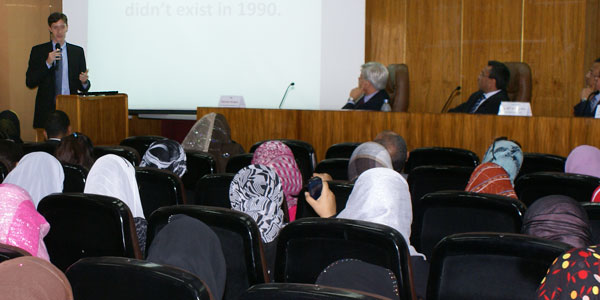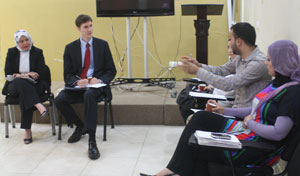Cairo University sent me some more photos from the two events that were held there last week. There was a great turnout to both events and, as I mentioned in my earlier post, the discussion was challenging and very interesting. I really wish I had more time to debate some of the issues that were raised.
Also, I would be remiss if I did not thank the staff at the U.S. Embassy in Cairo, and particularly the Information Resource Center. They really made this event happen. If you are interested in more events like this or to follow their work, I suggest checking out the Facebook pages for the U.S. Embassy Cairo and the Information Resource Center.



